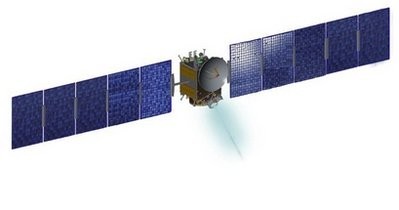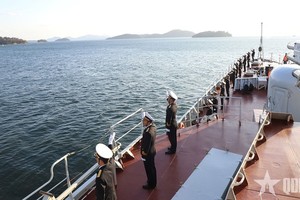The Dawn space probe is closing in on its first target, the massive asteroid Vesta, almost four years after its journey began in September 2007, NASA said Tuesday.
Dawn is on a long-haul mission to unlock the secrets of the solar system by studying the two largest asteroids orbiting the sun, Vesta and Ceres -- a trip that will carry it three billion miles by the time it is over.
It will be about three more months before the spacecraft gets close enough to begin orbiting the huge proto-planet, but NASA said it is eager to get to work.
"We feel a little like Columbus approaching the shores of the New World," said Christopher Russell, Dawn principal investigator, based at the University of California in Los Angeles.
"The Dawn team can't wait to start mapping this Terra Incognita."

After orbiting Vesta for about a year, the unmanned Dawn spacecraft will then carry on to Ceres, an even larger asteroid, in 2015, NASA said.
The deep-space probe is carrying photographic and science instruments to study the surface of the asteroids and analyze their gravitational pull.
Dawn's mission is to learn about the first moments of the solar system's creation 4.6 billion years ago by gathering information about Ceres and Vesta, including what kinds of elements form such terrestrial planets, among them Earth, Mars and Mercury.
It also plans to explain why and how Vesta and Ceres followed a different evolutionary and formative path, particularly the role that water may have played in their development.
Ceres, discovered in 1801, has a spherical shape and a diameter of about 960 kilometers (596 miles). Scientists believe it may have a layer of thick ice under its crust, covering a rocky core.
Ceres was classified in 2006 as a "dwarf planet," according to a new definition by astronomers to describe asteroids in the solar system.
The decision by the International Astronomical Union was the result of a debate about the status of Pluto, which is now classified as a dwarf planet along with Ceres and another celestial body, Eris.
Vesta, discovered in 1807, is smaller than Ceres but is the third largest asteroid in the solar system. With a diameter of 520 kilometers (323 miles), Vesta has a rocky surface without a trace of water and a hot interior.
Scientists are especially interested in the enormous crater on the south pole of Vesta, 460 kilometers wide and 13 kilometers deep, which is believed to be the result of a major collision.
After having canceled the Dawn project previously, NASA revived the mission in 2006 after an investment of 449 million dollars.
"After more than three and a half years of interplanetary travel, we are finally closing in on our first destination," said Marc Rayman, Dawn's chief engineer, at NASA's Jet Propulsion Laboratory in Pasadena, California.
"We're not there yet, but Dawn will soon bring into focus an entire world that has been, for most of the two centuries scientists have been studying it, little more than a pinpoint of light."
























